History:
Now, this wouldn’t be an impact video without a little bit of history, so let’s take it from the top. What we consider chocolate products today differ massively from the original uses of cacao. Cacao, which is what chocolate is made from, comes from trees native to South America. Previous studies have found that the history of chocolate goes back 2000 years, however many historians believe it to be much older, like twice as old. The first signs of the use of cacao were found in the ancient Mesoamerican civilization of the Olmecs, in today’s southern Mexico. And later evidence has been found that the Aztecs brewed a bitter drink from the beans and used it for rituals and medicine. Both the Mayans and Aztecs believed the cacao bean had magical, or even divine, properties, suitable for use in the most sacred rituals of birth, marriage, and death. The Latin name for the cacao tree is theobroma cacao, which means “food of the gods”.
also check out: WHAT IS MORE SUSTAINABLE: organic produce in plastic or package-free conventional produce?
Now skipping ahead a bit, cacao, and specifically, chocolate was introduced in Europe in the 1500s, because of what now… colonialism. In the wake of human exploitation and slavery, Europeans brought goods from South America back with them to Europe, and where the traditional cacao drinks were mixed with spices and chili peppers, in Europe they were quickly combined with sugar and vanilla (other resources obtained in colonies).
The entirety of Europe was obsessed with cacao, and specifically chocolate, however, must common people could not afford it, it was a treat reserved for the higher classes and royalty, like Anne of Austria, the daughter of Phillip III of Spain, who partook in the widespread custom of drinking chocolate for breakfast, or the wife of Luis XIV, Marie Therese who centralized the supremacy of chocolate in the French court. In Spain Philip V and Charles III saw the economic potential in trading cacao and created a monopoly between Madrid and Venezuela – this was one of the first steps towards making chocolate more available to the wider classes of Europe, of course, this came with some serious consequences for South America, as such large quantities of people suddenly demanded chocolate, and sadly I have been able to find alarmingly little about what this meant for the people to whom cacao was native and sacred, so if you know more, please share it down below. I didn’t know about the history of chocolate until my late twenties, and as such, the long and rich history is not a part of my culture or upbringing, as a result, I am aware that other people who are descendants of these exploited cultures, know a whole lot more about it. I am also finding myself in a skeptical position because a lot of the articles I read described Columbus as a great historical figure who, among others, were responsible for bringing chocolate to Europe, and at best, these articles are putting him in a neutral light, which I know for a fact is an injustice. But, let’s continue.
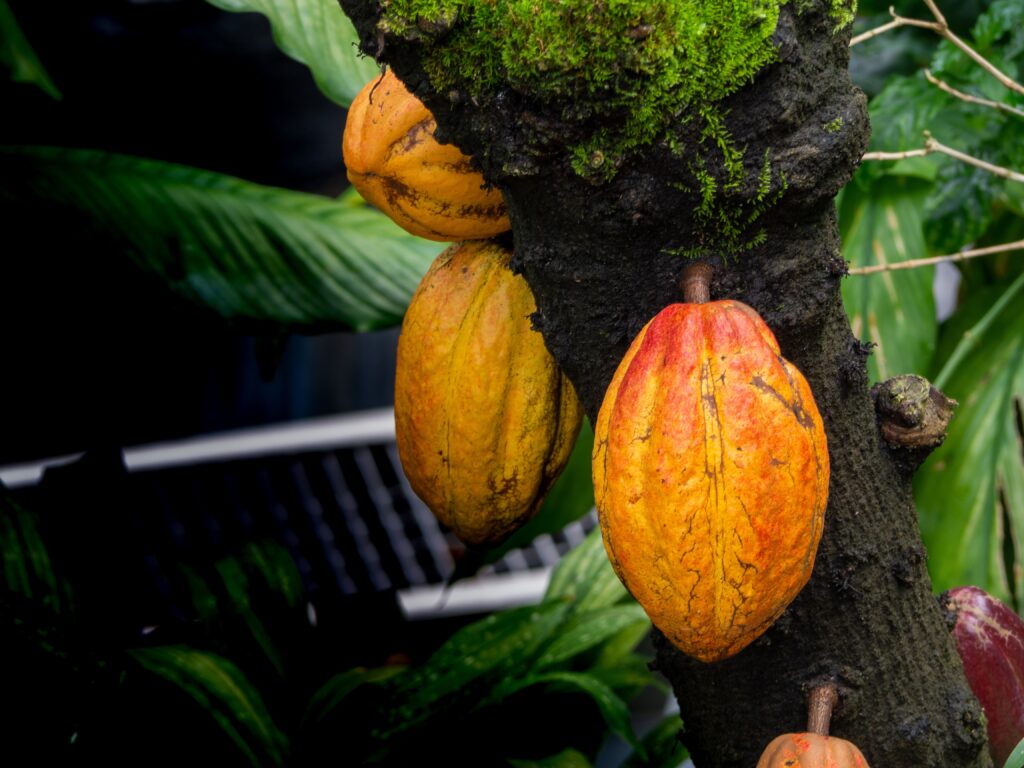
also check out: SHOPPING ONLINE OR IN-STORE // what is more sustainable?
In Europe, a long time went by before chocolate was used in desserts and cakes, one of the first instances of which was the 1747 publication The Art of Confectionary by Juan de la Mata. The more modern chocolate candy bars first appeared in 1847, exactly 100 years later. By 1868, a little company called Cadbury was marketing boxes of chocolate candies in England. Milk chocolate hit the market a few years later, pioneered by another name that may ring a bell (and who we could also talk plenty about in terms of sustainability, or lack thereof) – Nestle.
And from here industrialism and capitalism did what they do best, but more on that in a sec, because let’s talk about how chocolate is made today.
also check out: The Environmental Impact of Fast Food
Production:
Just a little clarification: chocolate, cacao, and cocoa all refer to different processes and forms of the bean. Both the tree, the pods, the raw beans/seeds are referred to as cacao. While cocoa is reserved for a processed bean after it has been fermented, dried, and roasted. Lastly, chocolate refers to pure cocoa in a solid or semisolid form, it is chocolate when it contains cocoa solids and cocoa butter. This is also referred to as chocolate liquor. Now dark chocolate is chocolate liquor + cocoa butter + sugar. Milk chocolate is chocolate liquor + milk powder, or condensed milk + sugar. And white chocolate is cocoa butter + sugar + milk – cocoa solids. Of course, this is a little bit simplified, but now we have a better idea of the differences.
also check out: The Environmental Impact of Animal Agriculture // and the history of factory farming
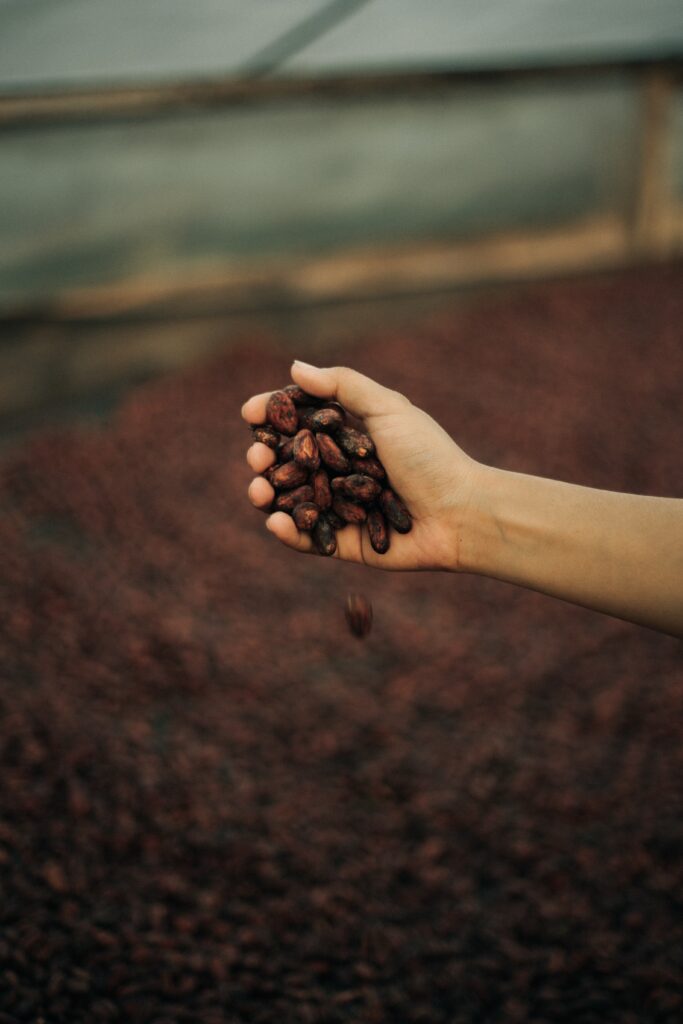
How chocolate is made:
The cacao tree is between 4-8 meters tall, cacao beans/seeds can be found within pods. The pods are these big oval fruits, and one pod contains between 30-50 beans, 1 bean being roughly the size of an olive. When the beans are harvested and removed from the pods, they have a naturally bitter taste to them, however, the taste becomes sweeter during fermentation. The fermentation uses already existing bacteria and yeasts from the beans, and it lasts about a week. Then the beans are dry roasted to bring out flavour, after being roasted, the beans have their hull and inner nibs removed, through a deshelling process. The nibs are ground to a fine powder which releases the cocoa butter and creates a fine paste. Once solidified, the chocolate is ready to be eaten – technically. This unsweetened chocolate is then used in various products, and before the chocolate ends up as the sweet snacks in the supermarket, extra milk, sugar, and various other ingredients are added in later production.
also check out: CARBON OFFSETS // does it work (the impact of ‘plant a tree’ campaigns)
The major producers and exporters of cacao beans are the Ivory Coast, Indonesia, Ecuador, Nigeria, and Brazil. In 2016, the annual production of cacao beans was that of 4.25 million tonnes.
In 2015, the worldwide sale of chocolate was estimated to be worth more than $101 billion; with Europe accounting for 45% of global consumption. The global production of cacao beans increased by 32% between 2000 and 2014, furthermore, the impact related to land-use for cacao plantations grew by 37 percent – from 7.6 to 10.4 million hectares during the same period.
also check out: THE IMPACT OF PLASTIC
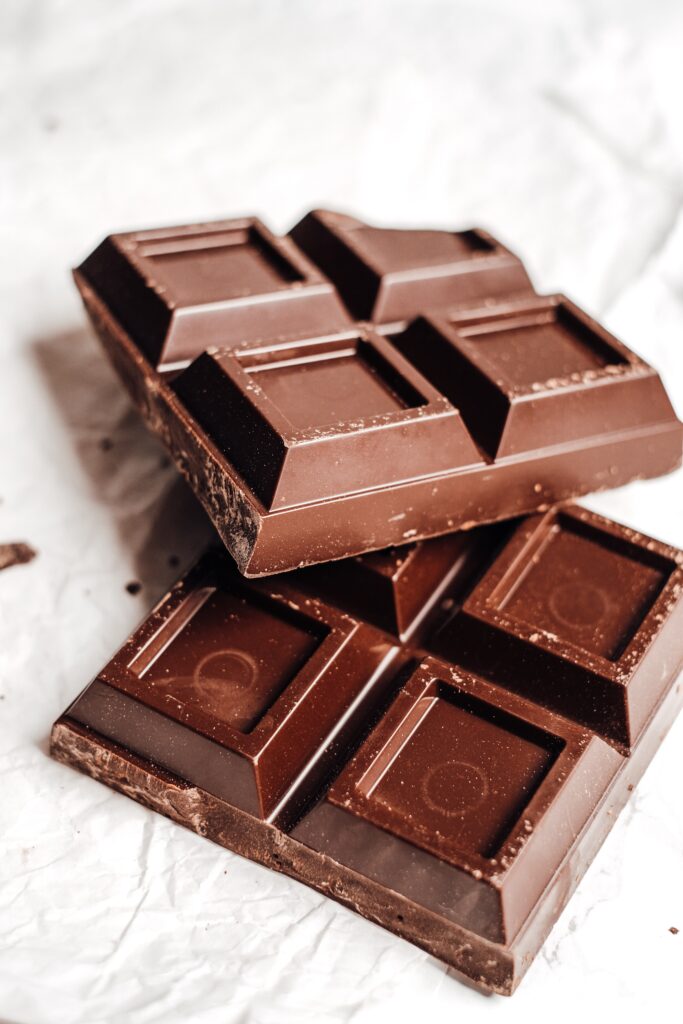
Impact:
Deforestation: The biggest contributors to global deforestation is palm oil, soy, cattle, and wood products, collectively responsible for 40% of deforestation, averaging 3.8 million hectares of lost natural habitat per year. When comparing these major industries to chocolate, the deforestation impact is fairly low with 2-3 million hectares of lost land between 1988 and 2008 (of course a statistic that has increased significantly since then, as we talked about before). Let it be known that a lot of chocolate production uses products from the aforementioned top 4, especially palm oil and dairy, which of course increases impact also.
However, the majority of deforestation related to chocolate production is concentrated in smaller areas in Southeast Asia and Sub-Saran Africa, particularly the Ivory Coast, Ghana Nigeria, Cameroon, and Indonesia. The factors that fuel these issues are related to poor legal systems and lacking government policies as well as increasing demand for cheaper cacao products. The industry also faces issues in terms of poor farming practices where the wild forest is constantly cleared to make room for new plantations rather than replanting on old farms. With increasing climate change and the consequences of widespread deforestation, the places where cacao can be cultivated will continue to grow smaller and smaller, however, several organizations are working towards sustainable systems in agriculture.
also check out: Is bioplastic actually more sustainable? // the environmental impact of “compostable” plastics
The world could run out of chocolate: While it sounds wild, the world could run out of chocolate, because we consume more than we produce. In 2019, the global consumption of chocolate was 70,0000 metric tons more than the global production average, and the numbers for demand are increasing, while more and more farmers move on to more profitable crops. The is partly due to dry weather conditions, that make cacao production difficult, as well as a disease that has wiped out 30-40% of cacao production, making cacao farming is a risky and expensive field. In terms of supply and demand, a lot of sources are pointing fingers towards China as a major consumer of chocolate, however, per capita, China consumes merely 5% of what Western Europa consumes.
Water consumption: Of course, like all plants, the cacao trees need some water to grow, but throughout the supply chains of the chocolate industry, a lot more than some water is being used. Actually, 10.000 liters of water is used to produce 1 kilogram of chocolate, which puts chocolate in the heavy end along with many types of animal products. 1 kilogram of beef for instance consumes 15,415 liters of water, 1 kilogram of pork consumes 5,998. In contrast, most vegetables are in the lower end with 1 kilogram of apples consuming 822 liters of water, 1 kilogram of tofu consuming 2513, and 1 kilogram of tomatoes consuming only 214 liters of water, on average. This does indeed make the average piece of chocolate a high impact food (Chart How Thirsty Is Our Food Statista, Water footprint Network)
Emissions: cacao sourcing and the energy supply used in the production of chocolate is a bit of an environmental hotspot, with many suppliers still needing to opt for sustainable energy sources. The overall global warming potential (GWP) of chocolate ranges from 2.9-4.2 kg CO2 eq./kg. I haven’t talked a whole lot about GWP on this channel, so let me explain what it means, as it is really handy to know when reading environmental texts.
also check out: The problem with palm oil / what you need to know about this industry NOW
So greenhouse gases (GHGs) warm the Earth by absorbing energy and slowing the rate with which this energy escapes to space, so the Earth gets warmer. Different types of GHGs have different rates and effects on the Earth’s warming, like how long they stay in the atmosphere and their ability to absorb energy, for instance, methane is 25 times more potent than Co2. The GWP compares the impacts of different gases, to show how much energy the emissions of 1 ton of a gas will absorb over a given period of time – in comparison to 1 ton of carbon dioxide. It is just a common unit of measure, so we’re able to compare emissions – and emission reduction opportunities across industries and gasses.
Human rights: We can’t only talk about the environmental impact, well ever, it is also important to consider the social impact of workers and people in the supply chain. And there is a lot to talk about here. Child labour and forced labour aka slavery has been an issue in the chocolate industry for years. The major chocolate companies in the world have missed deadlines to uproot child labour since the ’90s. More than 60% of the world’s cacao supply comes from West Africa, where a US Labor Department report has estimated more that more than 2 million children are engaged in dangerous labour. In 2019, representatives from Hershey, Mars, and Nestlé, when asked, could not guarantee chocolate products without child labour. The reason why that is is that the supply chains are very long and there is very little oversight, so the individual ingredients often can’t be traced back to a specific farmer. Mars can trace 24% of their chocolate, Hershey less than 50%, and Nestlé 49%, which leaves a lot of room open to exploitation.
The average age for children working in the industry is 12 to 16, but several reports show many cases of children as young as 5 being forced to work, furthermore while working, the majority of these children do not attend school and many work way into adulthood. Investigations have also uncovered who children are trafficked into Western African cacao farms and forced to work without pay. According to International Labour Rights Forum, every research study ever conducted in Western Africa shows that there is human trafficking going on, particularly in the Ivory Coast
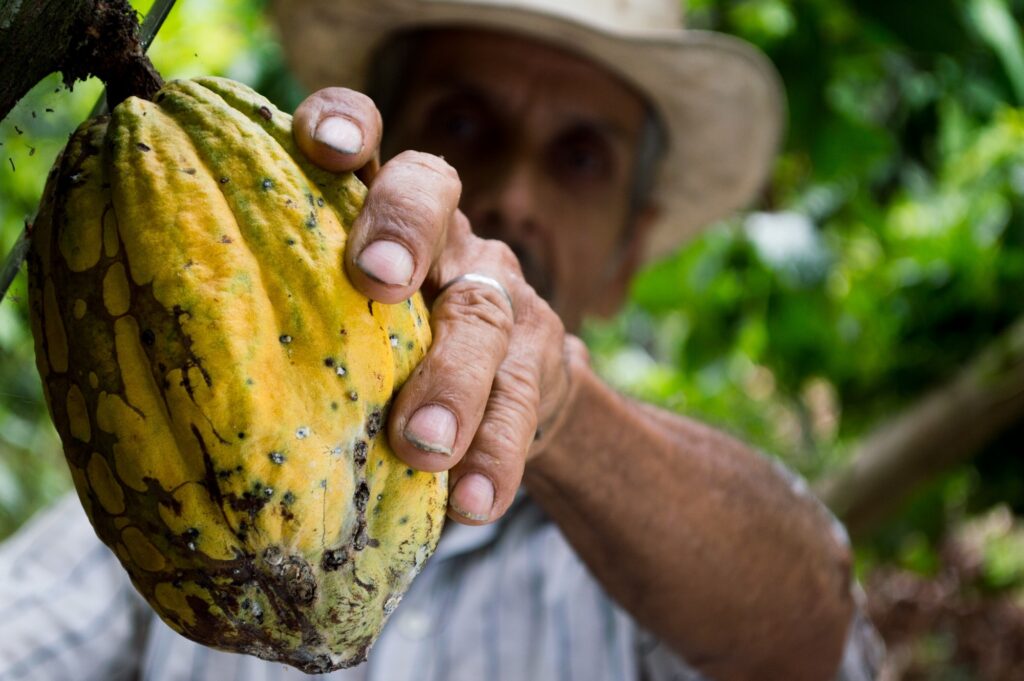
How to make chocolate more sustainable:
Effective certification: A 2021 report shows that roughly 23% of global chocolate in 2015 was certified by one of the four major labels: UTZ, Fairtrade, Rainforest Alliance, or Organic, which is a significant improvement from the 11% certified 10 years ago. I have made a certification guide that mentions these labels and what they mean, so give that a watch if you want more specific details. A certification is a great start because it puts third-party pressure on companies to deliver humane products, to pay liveable wages, and to uproot child labour, however, it is not a 100% effective solution, and child labour and slavery have still been detected, even in some certified Fairtrade products. And while it is great to see the individual companies make goals to improve and have more farms certified, the improvements are slow, very slow, and the things is when a company just promises something, there is little oversight, and no consequence to speak up from missing that goal. So next to certification and individual action from companies, we also need general overall political action and absolute bans on certain methods, as well as requirements for companies to support the communities that produce their products, like making education and health available.
In 2016, a study found that Fairtrade certified farmers in Ghana earned only $36 more than non-certified ones, which is not much more than 1% of the overall income, so yeah there is still room for improvements, even with certifications.
Choose dark chocolate: for several reasons, one reason being that dark chocolate does not contain a lot of those extra ingredients that can increase the impact, like milk or palm oil. But, when buying dark chocolate, the farmers are actually paid more, because darker chocolate contains more of the cocoa solids that they are paid for.
Direct trade: many smaller companies have a direct connection to the farmers who grow their beans, and those supply chains are thus much shorter, and usually a lot more ethical.
Reduce consumption: reduce the number of cacao products in your daily life and cup out the biggest companies, your Hersheys, your Mars, your Nestlés, etc. A lot of you guys have been asking if Tony’s is an ethical alternative, and in many ways it definitely is, their representatives have stated that their supply chain is not completely free of child labour, and they also still have many products that contain dairy, but the cases of child labour are fewer than many bigger brands’, overall in comparison, they are more ethical, but I would still recommend reducing consumption in addition to opting for better brands.
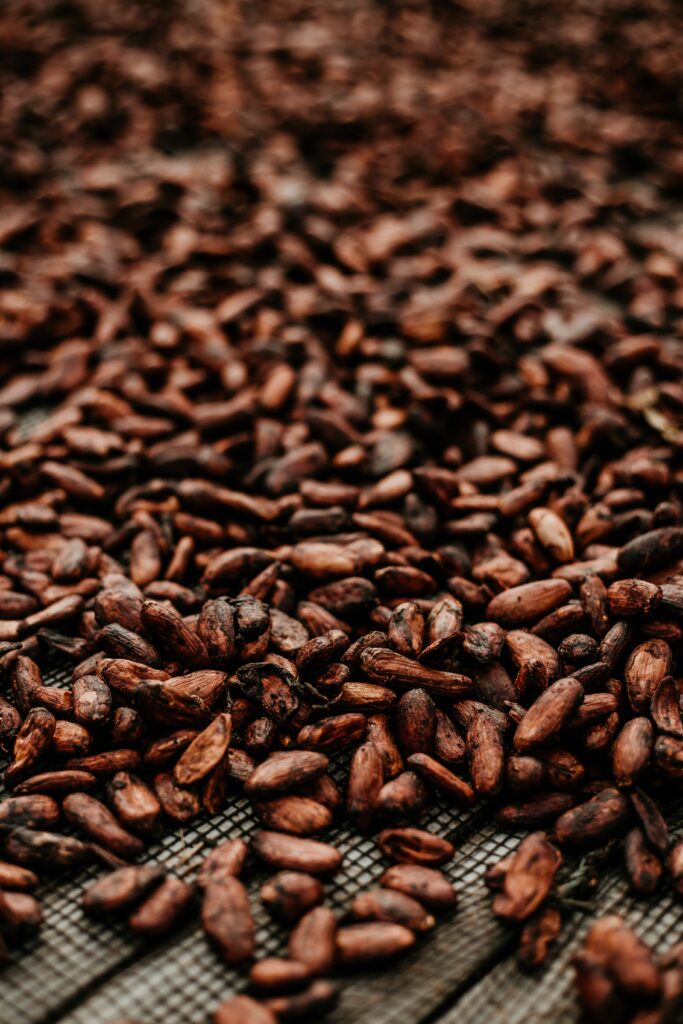

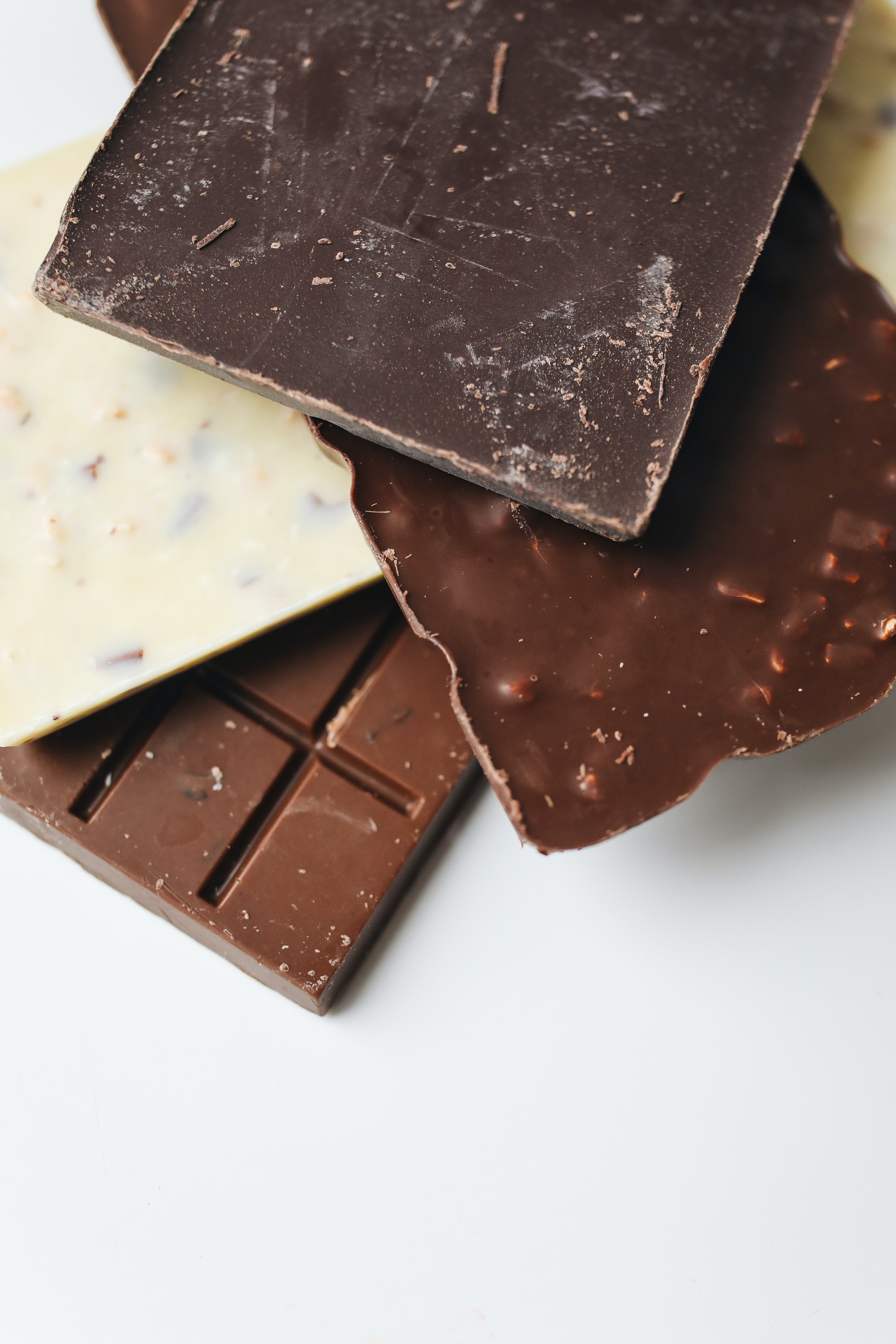



Halløj Gittemary
It would be really nice if you made a list of litterature on your posts. Not because we don´t trust you, but to make the posts more reliable. The content is so relevant and important, both for humans and nature. I really have to persuade my chocaddictive family to cut down on our consumption ; )
You are so cool
You can find the list of sources in the description of the YouTube videos I make for the impact posts. I can see that I forgot to add the video in this post, it is in here now , so you can find all the sources in there 😊
The reason why I have so far left the sources out here is that WordPress does not quite know what to do with these links, it messes up the entire post and format, so I decided to just keep the sources in the description for the video, hope that helps.